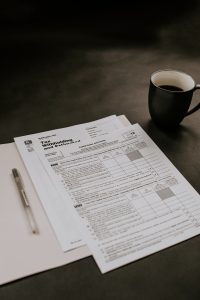Forex or foreign exchange market is the largest decentralized financial market in the world, where currencies are traded for various purposes such as commercial, speculative or hedging. Forex trading involves various elements such as currency pairs, leverage, margin, spread, and charges. Charges, also known as fees or commissions, are the costs incurred by traders for executing their trades or managing their accounts. In this article, we will discuss what charges mean in forex and how they impact traders’ profitability.
Forex charges can be divided into two categories: trading fees and non-trading fees. Trading fees are related to the actual execution of trades, whereas non-trading fees are related to account management and other administrative tasks.
Trading Fees
Trading fees are the costs incurred by traders for executing their trades. These fees are usually charged by brokers in the form of spreads, commissions or both. Spreads are the difference between the bid and ask price of a currency pair, and they represent the broker’s profit. Commissions, on the other hand, are a fixed fee charged by the broker per trade. Some brokers offer both spreads and commissions, while others offer only one of them.
Spread
The spread is the most common type of trading fee in forex. It is the difference between the bid and ask price of a currency pair. The bid price is the price at which traders can sell a currency pair, and the ask price is the price at which traders can buy a currency pair. The spread represents the broker’s profit, and it is usually measured in pips (percentage in points). The tighter the spread, the lower the trading cost for traders.
For example, if the bid price of EUR/USD is 1.2000 and the ask price is 1.2005, the spread is 5 pips. If a trader buys EUR/USD at 1.2005 and sells it at 1.2010, the trader needs to earn at least 5 pips to break even. If the spread is wider, the trader needs to earn more pips to break even.
Commission
Commission is another type of trading fee in forex. It is a fixed fee charged by the broker per trade, regardless of the size of the trade. The commission is usually charged in addition to the spread, and it varies from broker to broker. Some brokers charge a flat fee per trade, while others charge a percentage of the trade size.
For example, if a broker charges a commission of $10 per lot, and a trader buys one lot of EUR/USD, the total trading cost would be the spread plus the commission, which is $10. If the trader buys two lots, the commission would be $20, and so on.
Non-Trading Fees
Non-trading fees are the costs incurred by traders for account management and other administrative tasks. These fees are usually charged by brokers in the form of deposit and withdrawal fees, inactivity fees, account maintenance fees, and other charges.
Deposit and Withdrawal Fees
Deposit and withdrawal fees are the fees charged by brokers for depositing and withdrawing funds from traders’ accounts. These fees vary from broker to broker, and they may depend on the payment method used by traders. Some brokers offer free deposits and withdrawals, while others charge a fixed fee or a percentage of the transaction amount.
Inactivity Fees
Inactivity fees are the fees charged by brokers for inactive accounts. These fees are usually charged when traders do not execute any trades or do not log in to their accounts for a certain period of time. Inactivity fees can range from a few dollars per month to hundreds of dollars per year, depending on the broker and the account type.
Account Maintenance Fees
Account maintenance fees are the fees charged by brokers for maintaining traders’ accounts. These fees may include account opening fees, account closing fees, and other administrative charges. Account maintenance fees vary from broker to broker, and they may depend on the account type and the trading volume.
Conclusion
Charges, also known as fees or commissions, are the costs incurred by traders for executing their trades or managing their accounts. Forex charges can be divided into two categories: trading fees and non-trading fees. Trading fees are related to the actual execution of trades, whereas non-trading fees are related to account management and other administrative tasks. The most common types of trading fees are spreads and commissions, while non-trading fees include deposit and withdrawal fees, inactivity fees, and account maintenance fees. When choosing a broker, traders should consider the trading and non-trading fees, as they can significantly impact their profitability.





